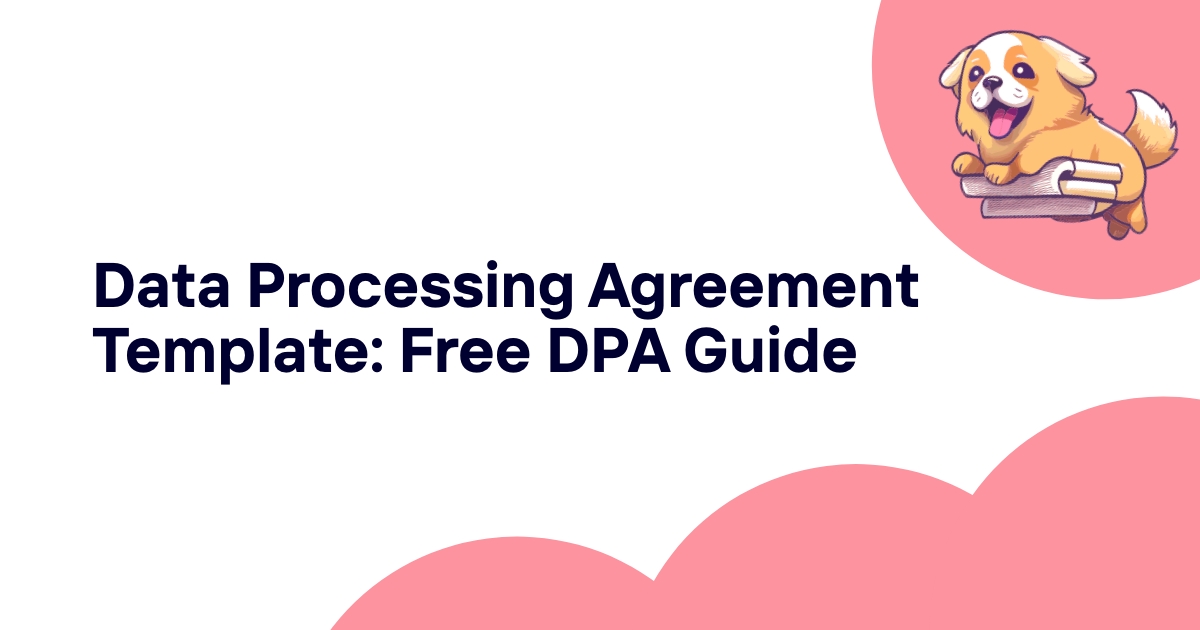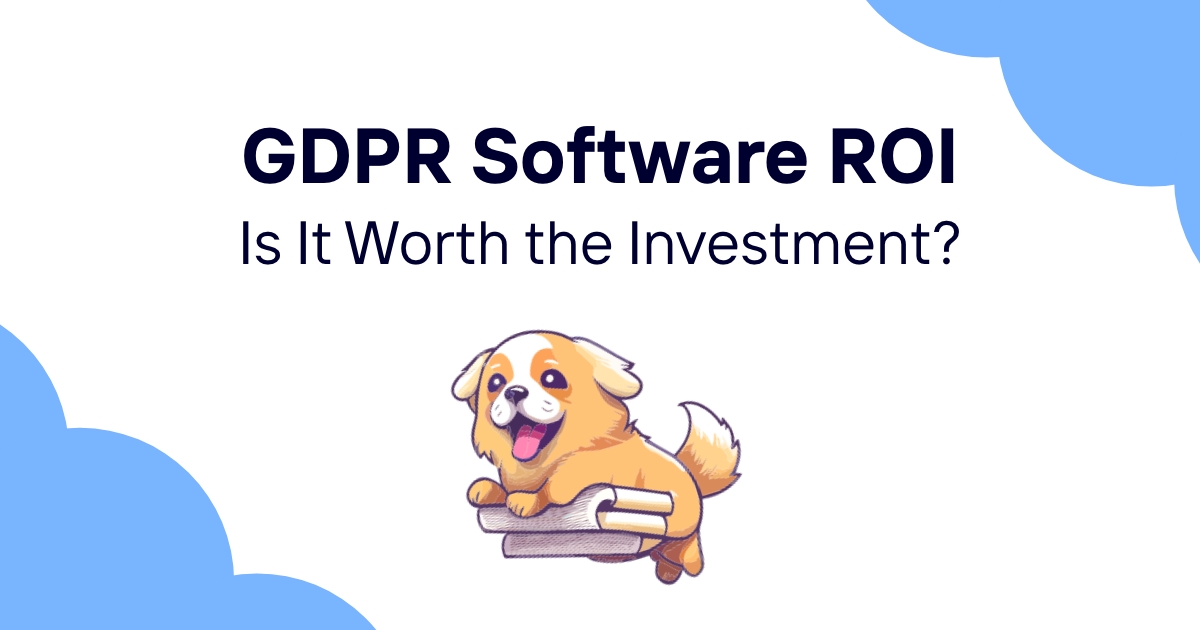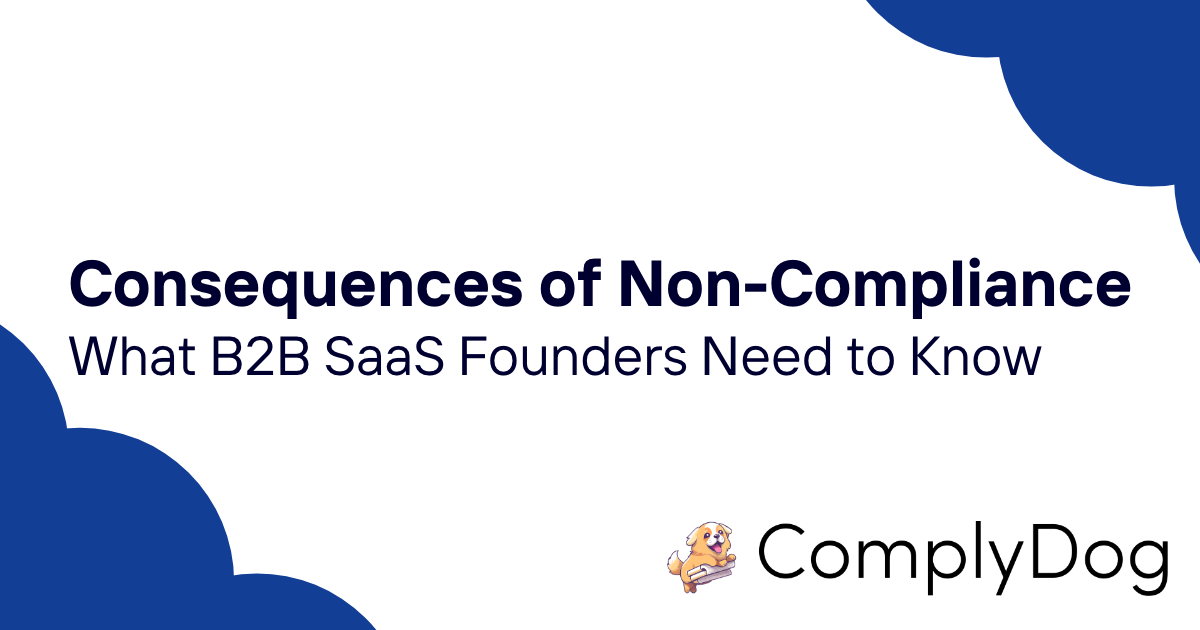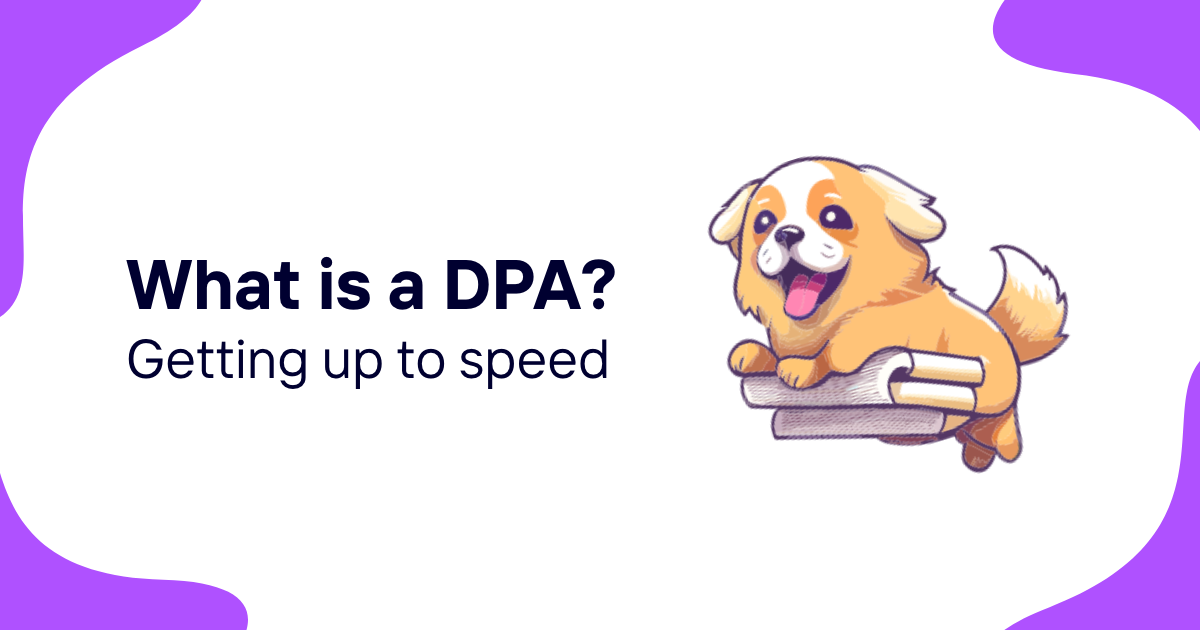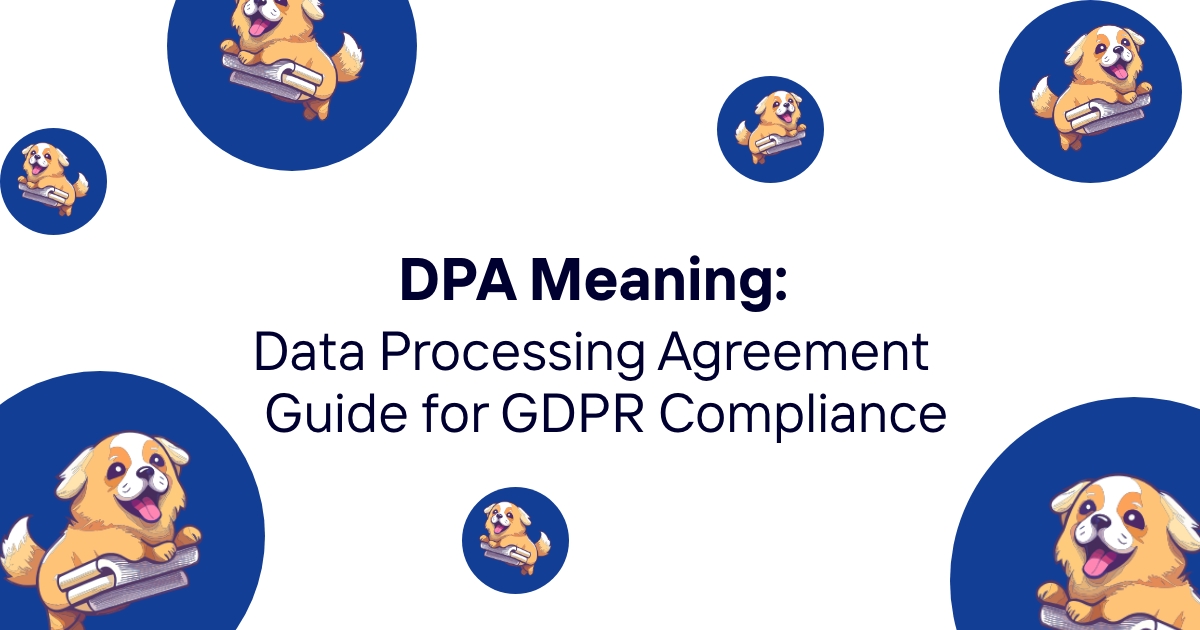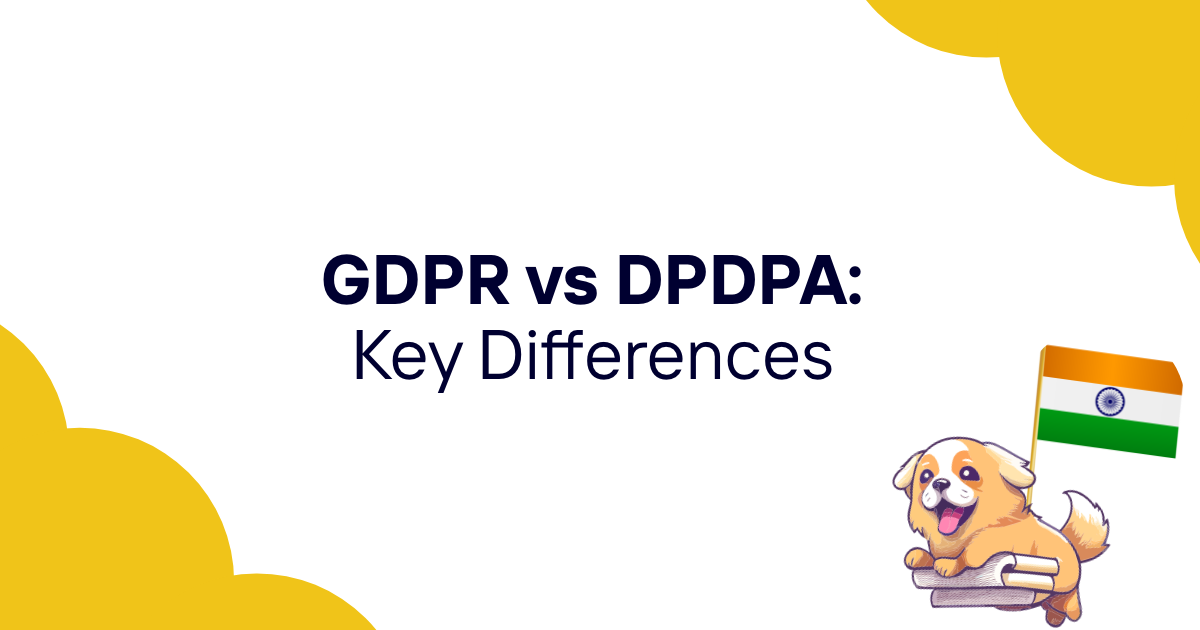Data Processing Agreements (DPAs) form the legal foundation for GDPR-compliant relationships between data controllers and processors. Having comprehensive, well-structured DPA templates streamlines contract negotiations while ensuring all required legal protections and compliance obligations are properly addressed.
This complete guide provides free DPA templates, customization guidance, and implementation strategies for creating effective data processing agreements. Understanding template structure and customization requirements helps organizations establish compliant processor relationships efficiently while maintaining appropriate legal protections.
DPA Template Overview and Requirements
Data Processing Agreement templates must address all GDPR Article 28 requirements while providing flexibility for different business relationships and processing scenarios.
GDPR Article 28 Compliance Framework
DPA templates must incorporate all mandatory elements specified by GDPR Article 28:
Processing Instructions: Clear, comprehensive instructions about how personal data should be processed, including purposes, categories, and limitations.
Confidentiality Obligations: Binding confidentiality commitments for all personnel who have access to personal data during processing activities.
Security Requirements: Specific technical and organizational measures required to protect personal data throughout processing and storage.
Sub-processor Management: Procedures for engaging additional processors including approval mechanisms and contract flow-down requirements.
Data Subject Rights Support: Obligations to assist the controller in responding to individual rights requests and fulfilling GDPR obligations.
Breach Notification: Prompt notification requirements for security incidents and personal data breaches affecting processing activities.
Audit and Inspection: Rights for controllers to audit processor compliance and verify adherence to agreement terms.
Data Return and Deletion: Procedures for returning or deleting personal data at the end of processing relationships.
Template Structure and Organization
Effective DPA templates follow logical structures that facilitate understanding and implementation:
Parties and Definitions: Clear identification of controller and processor with comprehensive definitions of key terms used throughout the agreement.
Processing Scope and Details: Detailed description of processing activities including data categories, purposes, and authorized personnel.
Compliance Obligations: Systematic coverage of all GDPR compliance requirements with specific implementation guidance.
Technical and Organizational Measures: Comprehensive security requirements appropriate for the type and sensitivity of personal data being processed.
Liability and Remedies: Clear allocation of liability and available remedies for compliance failures or agreement breaches.
Term and Termination: Duration provisions and procedures for ending processing relationships including data handling obligations.
Template Flexibility and Customization
DPA templates must balance standardization with customization needs:
Standard Provisions: Core GDPR requirements that remain consistent across different business relationships and processing scenarios.
Variable Elements: Provisions that require customization based on specific processing activities, data types, and business requirements.
Optional Clauses: Additional provisions that may be relevant for certain types of processing or business relationships.
Industry Adaptations: Specialized provisions for particular industries with unique regulatory requirements or business practices.
Jurisdiction Considerations: Provisions that address specific national implementations of GDPR or other applicable privacy laws.
Legal Foundation and Enforceability
DPA templates must create legally binding agreements that can be enforced in relevant jurisdictions:
Contract Law Integration: Templates must comply with general contract law principles while addressing specific GDPR requirements.
Jurisdiction Selection: Clear choice of law and jurisdiction provisions that provide legal certainty for both parties.
Dispute Resolution: Appropriate mechanisms for resolving disagreements including mediation, arbitration, or court proceedings.
Amendment Procedures: Clear procedures for modifying agreement terms while maintaining legal validity and GDPR compliance.
Severability Provisions: Clauses that preserve agreement validity even if specific provisions are found unenforceable.
Essential DPA Clauses and Components
Comprehensive DPA templates must include specific clauses that address all aspects of the controller-processor relationship while ensuring ongoing GDPR compliance.
Processing Instructions and Scope
Clear processing instructions prevent misunderstandings and ensure compliant data handling:
Processing Purposes: Specific, detailed description of why personal data is being processed and what business objectives it serves.
Data Categories: Comprehensive listing of all types of personal data that may be processed including special categories requiring enhanced protection.
Data Subject Categories: Clear identification of whose personal data is being processed including customers, employees, or other individuals.
Processing Activities: Detailed description of specific processing operations including collection, storage, analysis, sharing, and deletion.
Geographic Limitations: Any restrictions on where personal data can be processed or stored geographically.
Duration Limitations: Time limits on processing activities and data retention periods for different categories of personal data.
Security and Technical Measures
Comprehensive security requirements protect personal data throughout the processing relationship:
Encryption Requirements: Specific encryption standards for personal data both in transit and at rest using current security technologies.
Access Controls: Role-based access control requirements that limit personal data access to authorized personnel with legitimate business needs.
Authentication Standards: Multi-factor authentication and strong password requirements for systems containing personal data.
Network Security: Firewall, intrusion detection, and secure communication requirements for protecting personal data transmission.
Physical Security: Requirements for protecting physical facilities, equipment, and storage media containing personal data.
Incident Detection: Monitoring and detection capabilities that identify potential security incidents affecting personal data.
Vulnerability Management: Regular security assessments and prompt remediation of identified vulnerabilities that could affect personal data protection.
Backup Security: Security requirements for backup systems and disaster recovery environments containing personal data.
Sub-processor Management
Clear sub-processor provisions enable appropriate oversight while providing operational flexibility:
Authorization Requirements: Procedures for obtaining controller approval before engaging sub-processors to handle personal data.
Due Diligence Standards: Requirements for assessing sub-processor security and compliance capabilities before engagement.
Contract Flow-Down: Obligations to impose equivalent security and privacy requirements on sub-processors through appropriate contractual arrangements.
Monitoring Obligations: Ongoing oversight requirements for sub-processor compliance and performance throughout the relationship.
Liability Allocation: Clear responsibility for sub-processor actions and appropriate liability allocation between controller and processor.
Change Notification: Requirements for notifying controllers about sub-processor changes and providing opportunities for objection.
Alternative Arrangements: Procedures for providing alternative processing arrangements when controllers object to specific sub-processors.
Data Subject Rights Support
Processors must provide appropriate assistance for individual rights requests:
Request Assistance: Specific obligations to help controllers respond to access, rectification, erasure, restriction, portability, and objection requests.
Technical Capabilities: Requirements for technical systems that can efficiently locate and compile personal data for rights request responses.
Response Timeframes: Timeline requirements for providing assistance that enable controllers to meet GDPR response deadlines.
Information Provision: Requirements to provide controllers with information necessary for comprehensive rights request responses.
System Integration: Coordination requirements for rights request processing across different systems and platforms.
As discussed in our GDPR fines and penalties guide, inadequate DPAs or processor oversight can result in substantial enforcement actions and financial penalties.
Controller vs Processor Template Variations
Different template variations address varying perspectives and negotiation positions of controllers and processors in data processing relationships.
Controller-Favorable Templates
Controller-drafted templates typically emphasize processor obligations and controller protection:
Strict Processor Obligations: Comprehensive processor obligations with detailed compliance requirements and performance standards.
Broad Controller Rights: Extensive audit rights, termination options, and control over processing activities and decisions.
Processor Liability: Broad processor liability for compliance failures with limited liability caps or exclusions.
Detailed Instructions: Comprehensive processing instructions that provide controllers with extensive control over data handling.
Termination Rights: Broad controller termination rights for convenience or compliance concerns with minimal notice requirements.
Processor-Friendly Templates
Processor-drafted templates typically emphasize operational flexibility and liability protection:
Reasonable Obligations: Processor obligations that are reasonable and proportionate to the services provided and compensation received.
Liability Limitations: Appropriate liability caps and exclusions that protect processors from disproportionate financial exposure.
Operational Flexibility: Reasonable flexibility in processing methods and technical implementation while maintaining compliance objectives.
Shared Responsibility: Recognition of shared responsibility for compliance with appropriate allocation based on control and capability.
Performance Standards: Realistic performance standards that account for technical limitations and operational constraints.
Balanced Template Approaches
Balanced templates seek fair allocation of rights and obligations between controllers and processors:
Mutual Obligations: Appropriate obligations for both parties that recognize their respective roles and capabilities in ensuring compliance.
Shared Risk Management: Risk allocation based on each party's control over different aspects of personal data processing and protection.
Collaborative Compliance: Emphasis on collaborative approaches to achieving compliance rather than purely adversarial contractual relationships.
Proportionate Liability: Liability allocation that reflects each party's contribution to compliance failures or damages.
Flexible Implementation: Implementation approaches that adapt to changing circumstances while maintaining compliance objectives.
Negotiation Strategies
Effective DPA negotiation requires understanding different template approaches and common negotiation points:
Risk Assessment: Careful assessment of compliance risks and appropriate allocation based on control and expertise.
Industry Standards: Understanding industry-standard approaches to DPA terms and conditions for similar business relationships.
Regulatory Guidance: Incorporating relevant regulatory guidance and enforcement trends into template terms and negotiation strategies.
Business Objectives: Balancing compliance requirements with business objectives and operational efficiency needs.
Long-term Relationships: Considering long-term relationship objectives and mutual success factors in template development and negotiation.
Industry-Specific DPA Considerations
Different industries face unique regulatory requirements and business considerations that affect DPA template content and customization needs.
Healthcare DPA Requirements
Healthcare organizations must address specialized requirements for protected health information:
HIPAA Integration: Coordination between GDPR DPA requirements and HIPAA Business Associate Agreement obligations for organizations operating in both frameworks.
Health Data Security: Enhanced security requirements for processing protected health information including encryption, access controls, and audit logging.
Research Considerations: Special provisions for health data used in research including de-identification requirements and research ethics compliance.
Patient Rights: Coordination between GDPR individual rights and healthcare-specific patient rights under medical privacy laws.
Regulatory Reporting: Provisions addressing mandatory reporting requirements for healthcare incidents and regulatory compliance.
Financial Services DPA Templates
Financial institutions require specialized provisions for financial data protection:
Financial Privacy Laws: Integration with financial industry privacy requirements including Gramm-Leach-Bliley Act and banking regulations.
Payment Data Security: Enhanced security requirements for payment card information and financial transaction data processing.
Regulatory Oversight: Provisions addressing financial regulatory examination and compliance verification requirements.
Cross-Border Considerations: Special provisions for international financial data transfers and regulatory compliance across multiple jurisdictions.
Fraud Prevention: Provisions supporting anti-money laundering and fraud prevention while maintaining privacy protection.
Technology Sector Templates
Technology companies face unique considerations for platform and API data processing:
API Data Processing: Specialized provisions for data processing through application programming interfaces and platform integrations.
User-Generated Content: Provisions addressing personal data in user-generated content and content moderation activities.
Analytics and Tracking: Specific requirements for website analytics, user behavior tracking, and advertising technology integration.
Cloud Service Integration: Provisions for cloud-based processing including data residency, security, and service level requirements.
Development and Testing: Requirements for handling personal data in software development, testing, and quality assurance environments.
Education Sector Requirements
Educational institutions must address student privacy requirements alongside GDPR compliance:
FERPA Integration: Coordination between GDPR requirements and Family Educational Rights and Privacy Act obligations for student records.
Student Data Protection: Enhanced protections for student personal data including restrictions on commercial use and inappropriate sharing.
Parent Rights: Provisions addressing parental rights over children's educational data and consent requirements.
Research Activities: Special considerations for educational research activities involving student or faculty personal data.
Technology Integration: Requirements for educational technology platforms and online learning environments processing student data.
As outlined in our Data Protection Officer guide, organizations with DPOs must ensure processor relationships receive appropriate DPO oversight and guidance.
DPA Template Customization Guide
Effective DPA customization requires systematic approaches that address specific business requirements while maintaining GDPR compliance and legal enforceability.
Business Requirements Assessment
Customization begins with comprehensive assessment of specific business needs and processing requirements:
Processing Activity Analysis: Detailed analysis of specific personal data processing activities including purposes, data types, and operational requirements.
Risk Assessment: Evaluation of privacy risks associated with the processing relationship and appropriate mitigation measures.
Operational Requirements: Assessment of operational needs including performance standards, service levels, and business continuity requirements.
Regulatory Environment: Analysis of applicable regulatory requirements beyond GDPR including industry-specific laws and international frameworks.
Commercial Considerations: Evaluation of commercial terms including pricing, liability allocation, and intellectual property considerations.
Template Modification Process
Systematic modification ensures customized templates remain compliant while addressing specific needs:
Core Provision Review: Verification that all mandatory GDPR Article 28 requirements remain adequately addressed in customized templates.
Business-Specific Additions: Adding provisions that address unique business requirements or industry-specific considerations.
Risk-Based Adjustments: Modifying security requirements and compliance obligations based on specific risk assessments and data sensitivity.
Operational Integration: Adapting template provisions to align with existing business processes and operational procedures.
Legal Consistency: Ensuring customized provisions remain legally consistent and enforceable while addressing specific business needs.
Technical Specification Integration
DPA templates must address technical aspects of data processing relationships:
System Integration Requirements: Specifications for how processor systems integrate with controller systems and data flows.
Data Format Standards: Requirements for data formats, transmission protocols, and technical interoperability.
Performance Standards: Technical performance requirements including availability, response times, and processing capacity.
Monitoring and Reporting: Technical requirements for monitoring processing activities and providing compliance reporting.
Disaster Recovery: Technical requirements for backup, disaster recovery, and business continuity capabilities.
Compliance Verification
Customized templates require verification to ensure continued GDPR compliance:
Legal Review: Professional legal review of customized templates to verify GDPR compliance and enforceability.
Regulatory Alignment: Verification that customized provisions align with relevant regulatory guidance and enforcement expectations.
Industry Best Practices: Comparison with industry best practices and standard approaches for similar business relationships.
Internal Approval: Appropriate internal approval processes involving legal, privacy, and business stakeholders.
Documentation Maintenance: Comprehensive documentation of customization decisions and rationale for future reference and verification.
Legal Review and Validation Process
Professional legal review ensures DPA templates provide adequate protection while remaining enforceable and compliant with applicable legal requirements.
Legal Compliance Verification
Systematic legal review addresses multiple compliance requirements:
GDPR Article 28 Compliance: Detailed verification that templates include all mandatory elements required by GDPR Article 28.
Contract Law Requirements: Verification that templates comply with general contract law principles including offer, acceptance, consideration, and enforceability.
Jurisdiction-Specific Requirements: Review of national implementations of GDPR and other applicable privacy laws in relevant jurisdictions.
Industry Regulations: Assessment of industry-specific legal requirements that may affect data processing relationships.
International Considerations: Review of cross-border legal issues including international data transfer requirements and conflicting legal obligations.
Risk Assessment and Mitigation
Legal review identifies and addresses potential legal risks:
Liability Exposure: Assessment of potential liability exposure for both controllers and processors under different scenarios.
Enforcement Risks: Evaluation of regulatory enforcement risks and potential penalties for non-compliance.
Commercial Risks: Assessment of commercial risks including intellectual property, confidentiality, and business disruption concerns.
Operational Risks: Evaluation of operational risks that could affect agreement performance and compliance.
Mitigation Strategies: Development of risk mitigation strategies through appropriate contractual provisions and operational procedures.
Enforceability Analysis
Legal review ensures templates create enforceable obligations:
Jurisdiction Analysis: Assessment of enforceability in relevant legal jurisdictions where agreements may be performed or disputes resolved.
Remedy Availability: Verification that appropriate remedies are available for agreement breaches and compliance failures.
Dispute Resolution: Evaluation of dispute resolution mechanisms and their effectiveness in different jurisdictions.
Termination Procedures: Review of termination provisions and their enforceability under applicable legal frameworks.
Amendment Capabilities: Assessment of procedures for modifying agreements while maintaining legal validity and enforceability.
Documentation and Approval
Legal review requires appropriate documentation and approval processes:
Review Documentation: Comprehensive documentation of legal review findings and recommendations for template improvement.
Approval Procedures: Clear approval processes involving appropriate legal and business stakeholders.
Version Control: Systematic version control for legal-reviewed templates and tracking of modifications over time.
Update Procedures: Procedures for updating templates when legal requirements change or new risks are identified.
Training Integration: Integration of legal guidance into staff training and template usage procedures.
As discussed in our right to be forgotten guide, DPAs must address individual rights obligations including erasure support and data subject request assistance.
DPA Management and Updates
Effective DPA management requires ongoing attention to regulatory changes, business evolution, and relationship performance to maintain compliance and effectiveness.
Lifecycle Management
DPAs require systematic lifecycle management from initial negotiation through termination:
Initial Development: Comprehensive development process including business requirements analysis, template customization, and legal review.
Negotiation Management: Systematic negotiation process with appropriate stakeholder involvement and decision-making authority.
Execution and Implementation: Proper execution procedures including signature management and implementation communication.
Performance Monitoring: Ongoing monitoring of agreement performance and compliance with established terms and conditions.
Renewal Planning: Systematic renewal planning that addresses changing business needs and regulatory requirements.
Termination Management: Appropriate termination procedures including data handling obligations and relationship closure.
Regulatory Update Integration
DPAs must adapt to changing regulatory requirements and enforcement guidance:
Regulatory Monitoring: Systematic tracking of GDPR guidance updates, enforcement actions, and regulatory interpretation changes.
Impact Assessment: Assessment of how regulatory changes affect existing DPA terms and compliance obligations.
Update Requirements: Determination of when DPA updates are necessary to maintain compliance with evolving requirements.
Amendment Procedures: Efficient procedures for implementing necessary DPA amendments while maintaining legal validity.
Stakeholder Communication: Clear communication with processors and internal stakeholders about regulatory changes and DPA updates.
Performance and Compliance Monitoring
Ongoing monitoring ensures DPA compliance and relationship effectiveness:
Compliance Metrics: Key performance indicators that track processor compliance with DPA obligations and performance standards.
Audit Procedures: Regular audit procedures that verify processor compliance and identify potential issues.
Incident Management: Procedures for addressing compliance incidents and agreement breaches when they occur.
Improvement Planning: Systematic identification and implementation of improvements to DPA terms and compliance procedures.
Relationship Management: Ongoing relationship management that maintains positive processor relationships while ensuring compliance.
Documentation and Record Keeping
Comprehensive documentation supports DPA management and compliance verification:
Agreement Archives: Systematic archival of executed DPAs and all amendments with appropriate version control.
Compliance Records: Detailed records of compliance monitoring activities, audit results, and performance assessments.
Communication Logs: Documentation of significant communications with processors regarding compliance and performance issues.
Update History: Comprehensive records of DPA updates and amendments with rationale and approval documentation.
Training Records: Documentation of staff training on DPA management and compliance requirements.
Automated DPA Solutions
Modern DPA management increasingly relies on automation and technology solutions that streamline processes while ensuring comprehensive compliance and oversight.
DPA Generation and Customization
Automated solutions streamline DPA creation and customization:
Template Automation: Intelligent template systems that generate customized DPAs based on business requirements and processing characteristics.
Risk-Based Customization: Automated customization based on risk assessments and data sensitivity evaluations.
Regulatory Integration: Systems that automatically incorporate current regulatory requirements and guidance into DPA templates.
Industry Adaptation: Automated adaptation of DPA terms based on industry-specific requirements and best practices.
Legal Review Integration: Integration with legal review workflows and approval processes for efficient template validation.
Digital Execution and Management
Digital platforms streamline DPA execution and ongoing management:
Electronic Signature: Secure electronic signature capabilities that enable efficient DPA execution while maintaining legal validity.
Contract Management: Comprehensive contract management systems that track DPA status, renewal dates, and performance metrics.
Workflow Automation: Automated workflows for DPA negotiation, approval, and execution with appropriate stakeholder involvement.
Integration Capabilities: Integration with existing business systems including vendor management and procurement platforms.
Mobile Accessibility: Mobile-friendly interfaces that enable DPA management and approval from various devices and locations.
Compliance Monitoring Automation
Automated monitoring enhances DPA compliance oversight:
Performance Tracking: Automated tracking of processor performance against DPA obligations and service level agreements.
Compliance Alerts: Alert systems that notify appropriate personnel about compliance issues or upcoming renewal requirements.
Audit Automation: Automated audit procedures that systematically verify processor compliance with DPA requirements.
Risk Assessment: Automated risk assessment tools that evaluate processor compliance and identify potential issues.
Reporting Generation: Automated generation of compliance reports and dashboards for management and regulatory purposes.
Integration and Scalability
Modern DPA solutions integrate with broader privacy management and business systems:
Privacy Platform Integration: Integration with comprehensive privacy management platforms for unified compliance oversight.
Vendor Management: Coordination with vendor management systems for comprehensive supplier oversight and risk management.
Business System Integration: Integration with existing business systems including CRM, ERP, and procurement platforms.
API Connectivity: Robust APIs that enable custom integrations and data sharing with other business applications.
Scalability Support: Architecture that scales with business growth and handles increasing numbers of processor relationships efficiently.
Building effective DPA management requires combining comprehensive templates with systematic processes and appropriate technology support. The most successful approaches treat DPAs as strategic business tools that enable growth through trusted processor relationships rather than purely compliance documents.
For organizations seeking comprehensive DPA management alongside broader privacy compliance, integrated approaches often provide better coordination and effectiveness than standalone contract management that operates independently from other privacy activities.
Ready to streamline DPA management as part of comprehensive privacy compliance? Use ComplyDog and get integrated DPA management combined with complete GDPR compliance tools including automated agreement generation, processor oversight, and comprehensive privacy program coordination that ensures effective vendor relationships while maintaining regulatory compliance and business protection.
